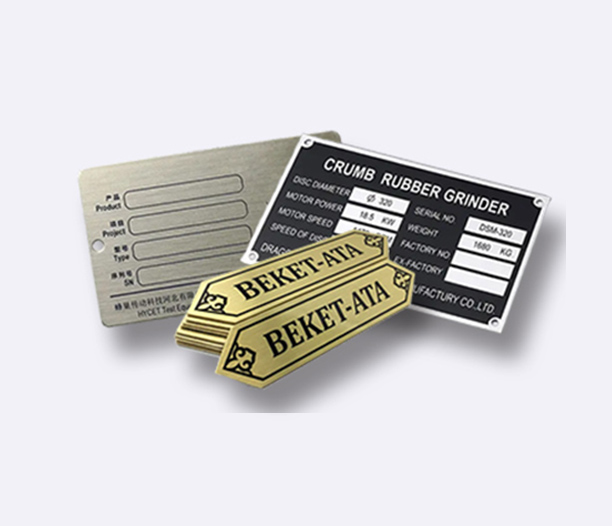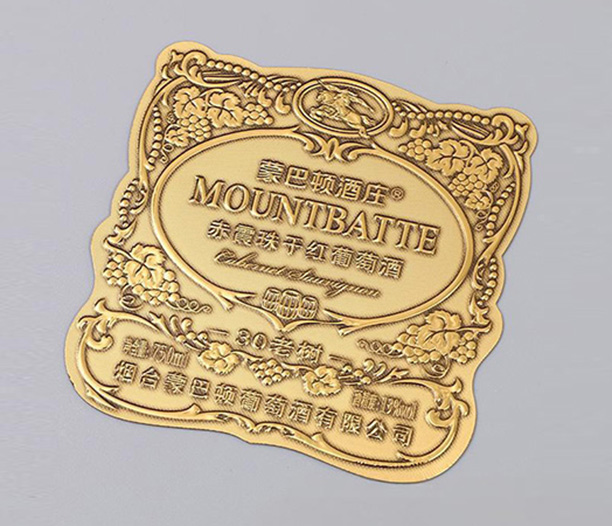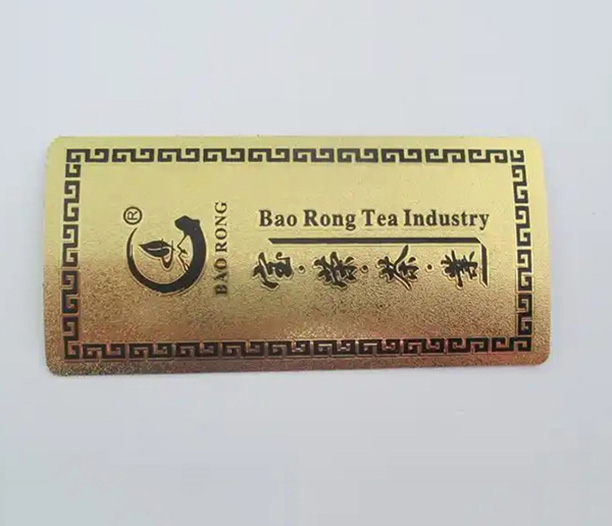When it comes to durable identification solutions, fade-resistant metal nameplates have become a go-to choice for industries ranging from manufacturing to aerospace. These nameplates are designed to withstand harsh environmental conditions, ensuring that critical information remains legible for years. Unlike standard labels that may deteriorate over time, fade-resistant metal nameplates offer a reliable way to display serial numbers, safety instructions, or branding without the risk of fading. In this article, we'll explore what makes these nameplates so effective, covering key aspects such as materials, manufacturing processes, and common applications. We'll also address frequently asked questions to help you make informed decisions. Whether you're looking to upgrade your asset labeling or ensure compliance with industry standards, understanding the ins and outs of fade-resistant metal nameplates is essential for long-term success.
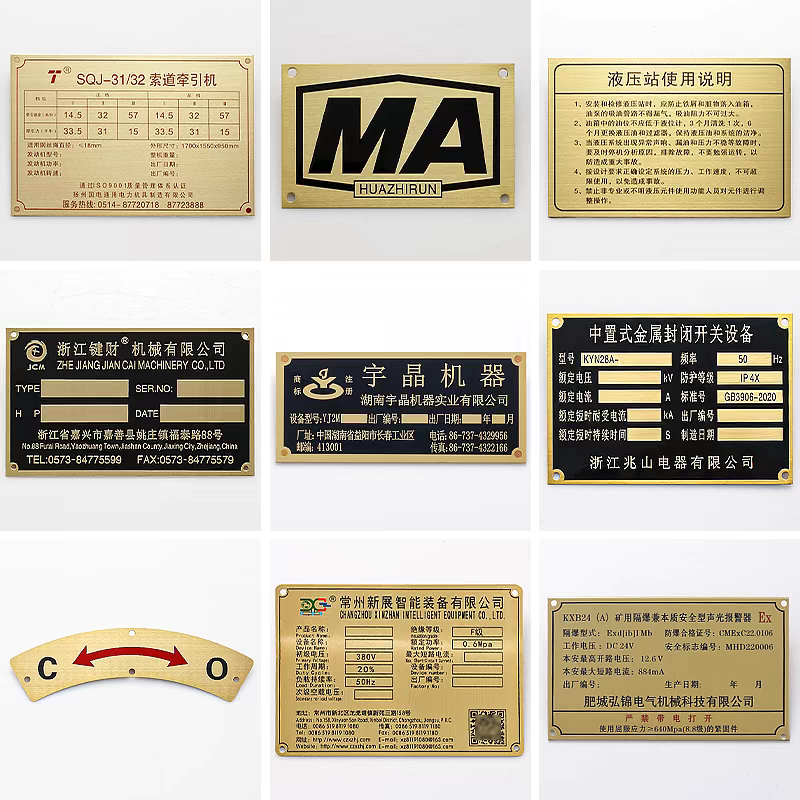
What Are Fade-Resistant Metal Nameplates?
Fade-resistant metal nameplates are specialized identification plates made from metals like aluminum, stainless steel, or brass, treated with coatings or engraving techniques to prevent color loss or text degradation. They are commonly used in environments where exposure to UV light, chemicals, or abrasion could cause ordinary labels to fade. The term "fade-resistant" refers to the ability of these nameplates to maintain their appearance under stressful conditions, thanks to advanced manufacturing methods. For instance, anodizing or powder coating can create a protective layer that shields the surface from sunlight and moisture. This makes fade-resistant metal nameplates ideal for outdoor equipment, industrial machinery, and medical devices, where clarity and durability are paramount. By investing in fade-resistant metal nameplates, businesses reduce replacement costs and enhance safety through reliable identification.
The importance of fade-resistant metal nameplates cannot be overstated. In sectors like automotive or construction, faded labels can lead to misidentification, accidents, or non-compliance with regulations. Thus, these nameplates serve not just as labels but as critical components of risk management. As we delve deeper, you'll see how their design and materials contribute to their longevity, making fade-resistant metal nameplates a smart choice for any application requiring permanent marking.
Materials Used in Fade-Resistant Metal Nameplates
The effectiveness of fade-resistant metal nameplates largely depends on the materials selected. Common metals include aluminum, which is lightweight and corrosion-resistant, often anodized to enhance fade resistance. Anodizing involves an electrochemical process that thickens the natural oxide layer, providing a hard surface that resists UV rays and scratches. Stainless steel is another popular choice, especially for harsh environments like marine or chemical plants, due to its innate strength and resistance to rust. For a more decorative touch, brass or bronze can be used, with clear coatings to prevent tarnishing.
Coatings play a vital role in making these nameplates fade-resistant. For example, powder coating applies a dry pigment that is cured under heat, forming a durable finish that doesn't chip or fade easily. Similarly, ceramic coatings offer high-temperature resistance, suitable for engine components or industrial ovens. The selection of materials for fade-resistant metal nameplates is tailored to the application—outdoor uses might prioritize UV-resistant alloys, while indoor settings could focus on abrasion resistance. By choosing the right combination, manufacturers ensure that fade-resistant metal nameplates perform reliably over decades, even in extreme conditions.
Innovations in materials science continue to improve fade-resistant metal nameplates. For instance, composite metals with embedded protective layers are emerging, offering enhanced durability without adding weight. This adaptability makes fade-resistant metal nameplates a versatile solution across industries, from electronics to energy sectors.
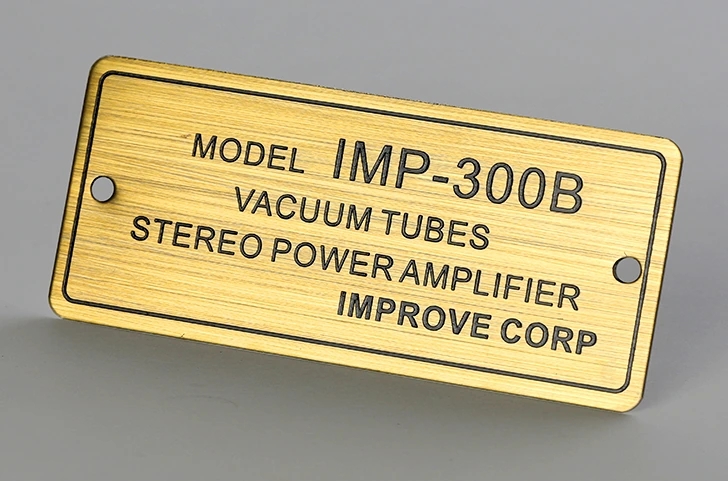
Manufacturing Processes for Fade-Resistance
The manufacturing process is crucial in creating fade-resistant metal nameplates. It typically begins with design and prototyping, where graphics and text are laid out using software. Then, techniques like etching, stamping, or laser engraving are employed to imprint information onto the metal surface. To achieve fade resistance, post-processing steps such as anodizing, painting, or laminating are applied. Anodizing, as mentioned, builds a protective layer, while screen printing with UV-resistant inks ensures that colors remain vibrant.
Quality control is integral to producing reliable fade-resistant metal nameplates. Each batch undergoes testing for adhesion, colorfastness, and environmental resistance. For example, accelerated weathering tests simulate years of sun exposure to verify that the nameplates won't fade prematurely. This attention to detail ensures that every fade-resistant metal nameplate meets industry standards, such as those set by ISO for durability. Manufacturers also customize processes based on client needs—whether it's adding barcodes for tracking or creating complex shapes for specific equipment.
By leveraging advanced technologies like digital printing or chemical etching, producers can create intricate designs without compromising on fade resistance. This flexibility allows fade-resistant metal nameplates to be used in creative applications, such as architectural signage or memorial plaques, where aesthetics and longevity are equally important.
Advantages of Using Fade-Resistant Metal Nameplates
The primary advantage of fade-resistant metal nameplates is their longevity. Unlike plastic or paper labels, they don't degrade easily, reducing the need for frequent replacements and lowering long-term costs. This durability translates to better asset management, as information like serial numbers or safety warnings remains readable throughout the product's lifecycle. In industries like aviation or healthcare, where safety is critical, fade-resistant metal nameplates help maintain compliance with regulations by ensuring that labels don't become illegible over time.
Another benefit is versatility. Fade-resistant metal nameplates can be customized in terms of size, color, and finish, making them suitable for various applications. For instance, in outdoor settings, they resist fading from sunlight, while in industrial environments, they withstand chemicals and physical abuse. This adaptability makes fade-resistant metal nameplates a preferred choice for branding, as logos and text stay sharp and visible.
Environmental resistance is a key selling point. Fade-resistant metal nameplates are often designed to endure temperature extremes, moisture, and UV exposure, which is why they're used in automotive parts, military equipment, and renewable energy systems. By opting for fade-resistant metal nameplates, companies demonstrate a commitment to quality and sustainability, as these products often have a longer lifespan, reducing waste.
Common Applications of Fade-Resistant Metal Nameplates
Fade-resistant metal nameplates find use in a wide array of industries. In manufacturing, they label machinery with operational instructions or part numbers, ensuring that workers can access vital information without error. The automotive sector relies on them for VIN plates or engine components, where fading could lead to safety issues or recall problems. Similarly, in aerospace, fade-resistant metal nameplates are essential for identifying aircraft parts that face high altitudes and weather changes.
Construction and infrastructure projects use these nameplates for permanent marking on bridges, pipelines, or buildings, where exposure to the elements is constant. In consumer goods, high-end appliances might feature fade-resistant metal nameplates for brand identification that lasts as long as the product itself. Even in medical devices, where sterilization and cleanliness are paramount, fade-resistant metal nameplates provide durable labels that won't peel or fade during cleaning processes.
The versatility of fade-resistant metal nameplates extends to decorative purposes, such as awards or commemorative plaques, where aesthetics matter. By understanding these applications, businesses can better appreciate how fade-resistant metal nameplates add value beyond basic identification.
Comparing Fade-Resistant Metal Nameplates to Other Types
When compared to alternative nameplates, such as plastic or vinyl, fade-resistant metal nameplates offer superior durability. Plastic labels may cost less initially but are prone to cracking, fading, or melting under heat. Vinyl decals can peel off in moist conditions, whereas fade-resistant metal nameplates adhere firmly and resist environmental stressors. Metal options also provide a professional appearance that enhances product value.
Cost-effectiveness is another factor. While fade-resistant metal nameplates might have a higher upfront cost, their long lifespan often makes them more economical over time. For example, in outdoor applications, replacing faded plastic labels every few years can add up, while a one-time investment in fade-resistant metal nameplates saves money and effort. Additionally, metal nameplates are more recyclable, aligning with green initiatives.
However, it's important to note that fade-resistant metal nameplates may not be suitable for all scenarios—such as temporary labeling—where cheaper alternatives suffice. But for permanent, high-stakes applications, the benefits of fade-resistant metal nameplates clearly outweigh other options.
Frequently Asked Questions About Fade-Resistant Metal Nameplates
1. How long do fade-resistant metal nameplates typically last?
Fade-resistant metal nameplates can last for decades, depending on the environment. With proper coatings, they often remain legible for 20+ years, even in harsh conditions.
2. Can fade-resistant metal nameplates be customized?
Yes, they are highly customizable in terms of shape, color, and text. Manufacturers use various techniques to meet specific design requirements.
3. Are there any limitations to using fade-resistant metal nameplates?
The main limitations are cost and weight compared to plastic alternatives. They might also require professional installation for optimal adhesion.
4. How do I maintain fade-resistant metal nameplates?
Maintenance is minimal—usually just wiping with a damp cloth. Avoid abrasive cleaners to preserve the coating.
5. What industries benefit most from fade-resistant metal nameplates?
Industries like automotive, aerospace, construction, and healthcare see the greatest benefits due to their need for durable, long-lasting identification.
In conclusion, fade-resistant metal nameplates are a robust solution for anyone seeking reliable, long-term labeling. By considering materials, manufacturing, and applications, you can leverage their full potential for your projects.



